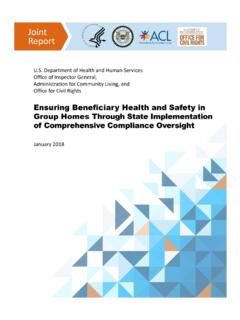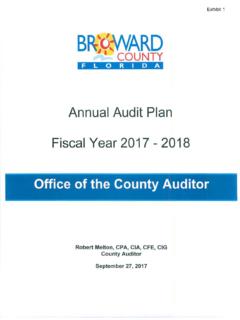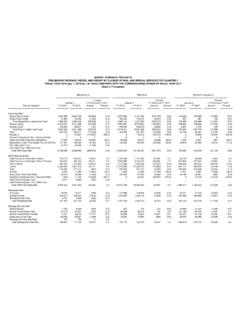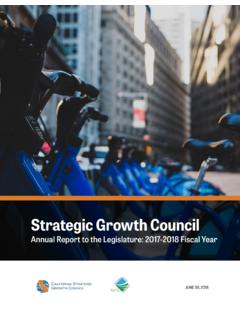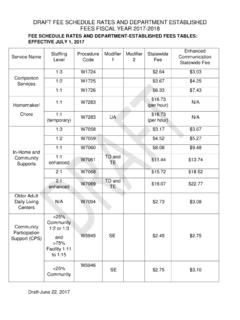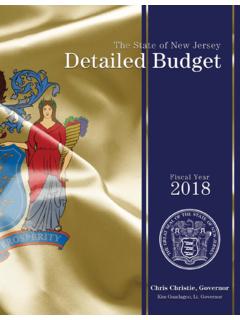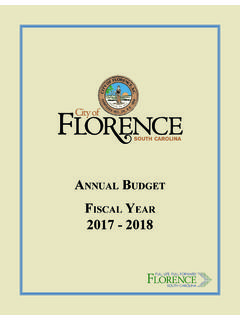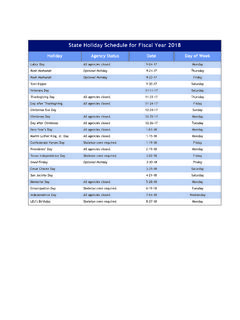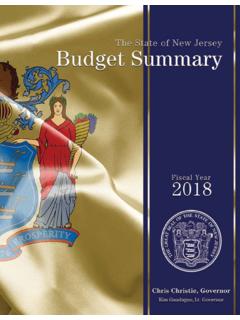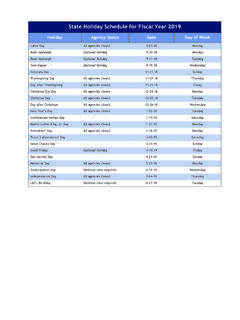Transcription of The Department of Health and Human Services And The ...
1 The Department of Health and Human Services And The Department of Justice Health Care Fraud and Abuse Control Program Annual Report for fiscal year 2017 April 2018 TABLE OF CONTENTS I. Executive Summary 1 II. Statutory Background 3 III. Program Results and Accomplishments 5 Monetary Results 5 Expenditures 7 Overall Recoveries 8 Health Care Fraud Prevention and Enforcement Action Team 8 Health Care Fraud Prevention Partnership 9 Medicare Fraud Strike Force 9 Opioid Fraud and Abuse Detection Unit 12 Highlights of Successful Criminal and Civil Investigations 13 IV.
2 Department of Health and Human Services 34 Office of Inspector General 34 Centers for Medicare & Medicaid Services 45 Administration on Community Living 64 Office of the General Counsel 67 Food and Drug Administration Pharmaceutical Fraud Program 70 V. Department of Justice 73 United States Attorneys 73 Civil Division 74 Criminal Division 79 Civil Rights Division 82 VI. Appendix 89 Federal Bureau of Investigation 89 Return on Investment Calculation 93 Total HCFAC Resources 94 VII. Glossary of Terms 95 GENERAL NOTE All years are fiscal years unless otherwise stated in the text. EXECUTIVE SUMMARY The Health Insurance Portability and Accountability Act of 1996 (HIPAA) established a national Health Care Fraud and Abuse Control Program (HCFAC or the Program) under the joint direction of the Attorney General and the Secretary of the Department of Health and Human Services (HHS)1, acting through the Inspector General, designed to coordinate federal, state and local law enforcement activities with respect to Health care fraud and abuse.
3 In its twenty-first year of operation, the Program s continued success confirms the soundness of a collaborative approach to identify and prosecute the most egregious instances of Health care fraud, to prevent future fraud and abuse, and to protect program beneficiaries. Monetary Results During fiscal year (FY) 2017 , the Federal Government won or negotiated over $ billion in Health care fraud judgments and settlements2, and it attained additional administrative impositions in Health care fraud cases and proceedings. As a result of these efforts, as well as those of preceding years, in FY 2017 $ billion was returned to the Federal Government or paid to private persons. Of this $ billion, the Medicare Trust Funds3 received transfers of approximately $ billion during this period, and $ million in Federal Medicaid money was similarly transferred separately to the Treasury as a result of these efforts.
4 Enforcement Actions In FY 2017 , the Department of Justice (DOJ) opened 967 new criminal Health care fraud investigations. Federal prosecutors filed criminal charges in 439 cases involving 720 defendants. A total of 639 defendants were convicted of Health care fraud-related crimes during the year . Also in FY 2017 , DOJ opened 948 new civil Health care fraud investigations and had 1,086 civil Health care fraud matters pending at the end of the fiscal year . In FY 2017 , the FBI investigative efforts resulted in over 674 operational disruptions of criminal fraud organizations and the dismantlement of the criminal hierarchy of more than 148 Health care fraud criminal enterprises. In FY 2017 , investigations conducted by HHS Office of Inspector General (HHS-OIG) resulted in 788 criminal actions against individuals or entities that engaged in crimes related to Medicare and Medicaid, and 818 civil actions, which include false claims and unjust-enrichment lawsuits filed in federal district court, civil monetary penalties (CMP) settlements, and administrative recoveries related to provider self-disclosure matters.
5 HHS-OIG also excluded 3,244 individuals and entities from participation in Medicare, Medicaid, and other federal Health care programs. Among these were exclusions based on criminal convictions for crimes related to Medicare and Medicaid (1,281) or to other Health care programs (309), for patient abuse or neglect (266), and 1 Hereafter, referred to as the Secretary. 2 The amount reported as won or negotiated only reflects the federal recoveries and therefore does not reflect state Medicaid monies recovered as part of any global federal-state settlements. 3 The Medicare Trust Funds are also known as the Medicare Hospital Insurance (Part A) Trust Fund and the Supplemental Medical Insurance (Part B) Trust Fund. 1 as a result of licensure revocations (973). HHS-OIG also issued numerous audits and evaluations with recommendations that, when implemented, would correct program vulnerabilities and save program funds.
6 Sequestration Impact Due to sequestration of mandatory funding in 2017 , there were fewer resources for DOJ, FBI, HHS, and HHS-OIG to fight fraud and abuses against Medicare, Medicaid, and other Health care programs. A total of $ million was sequestered from the HCFAC program in FY 2017 , for a combined total of $ million in the past five years. Including funds sequestered from the FBI and the FY 2013 discretionary HCFAC sequester, the total equals $ million in the past five years. 2 STATUTORY BACKGROUND The Annual Report of the Attorney General and the Secretary detailing expenditures and revenues under the Health Care Fraud and Abuse Control Program for fiscal year 2017 is provided as required by Section 1817(k)(5) of the Social Security Act.
7 The Social Security Act Section 1128C(a), as established by the Health Insurance Portability and Accountability Act of 1996 ( 104-191, HIPAA or the Act), created the Health Care Fraud and Abuse Control Program, a far-reaching program to combat fraud and abuse in Health care, including both public and private Health plans. As was the case before HIPAA, amounts paid to Medicare in restitution or for compensatory damages must be deposited in the Medicare Trust Funds. The Act requires that an amount equaling recoveries from Health care investigations including criminal fines, forfeitures, civil settlements and judgments, and administrative penalties also be deposited in the Trust Funds. The Act appropriates monies from the Medicare Hospital Insurance Trust Fund to an expenditure account, called the Health Care Fraud and Abuse Control Account (the Account), in amounts that the Secretary and Attorney General jointly certify as necessary to finance anti-fraud activities.
8 The maximum amounts available for certification are specified in the Act. Certain of these sums are to be used only for activities of the HHS-OIG, with respect to the Medicare and Medicaid programs. In FY 2006, the Tax Relief and Health Care Act (TRHCA) ( 109-432, 303) amended the Act so that funds allotted from the Account are available until expended. TRHCA also allowed for yearly increases to the Account based on the change in the consumer price index for all urban consumers (all items, United States city average) (CPI-U) over the previous fiscal year for fiscal years for 2007 through In FY 2010, the Patient Protection and Affordable Care Act, as amended by the Health Care and Education Reconciliation Act, collectively referred to as the Affordable Care Act ( 111-148, ACA) extended permanently the yearly increases to the Account based upon the change in the consumer price index for all urban consumers, or CPI-U.
9 In FY 2017 , the Secretary and the Attorney General certified $ million in mandatory funding to the Account after accounting for sequester reductions of $ million to the total appropriation. Additionally, Congress appropriated $ million in discretionary funding. A detailed breakdown of the allocation of these funds is set forth later in this report. HCFAC appropriations generally supplement the direct appropriations of HHS that are devoted to Health care fraud enforcement and have supported over two-thirds of DOJ s Health care fraud funding and over three-fourths of HHS-OIG s appropriated budget in FY 2017 . (Separately, the FBI, which is discussed in the appendix, received $ million from HIPAA, after accounting for $ million in mandatory sequester reductions.) Under the joint direction of the Attorney General and the Secretary, the Program s goals are: 4 The CPI-U adjustment in TRHCA did not apply to the Medicare Integrity Program (MIP).
10 Section 6402 of the ACA indexed Medicare Integrity Program funding to inflation starting in FY 2010. 3 (1) To coordinate federal, state and local law enforcement efforts relating to Health care fraud and abuse with respect to Health plans; (2) To conduct investigations, audits, inspections, and evaluations relating to the delivery of and payment for Health care in the United States; (3) To facilitate enforcement of all applicable remedies for such fraud; and (4) To provide education and guidance regarding complying with current Health care law. Additionally, the Act requires the Attorney General and the Secretary to submit a joint annual report to the Congress that identifies both: (1) The amounts appropriated to the Trust Funds for the previous fiscal year under various categories and the source of such amounts; and (2) The amounts appropriated from the Trust Funds for such year for use by the Attorney General and the Secretary and the justification for the expenditure of such amounts.



